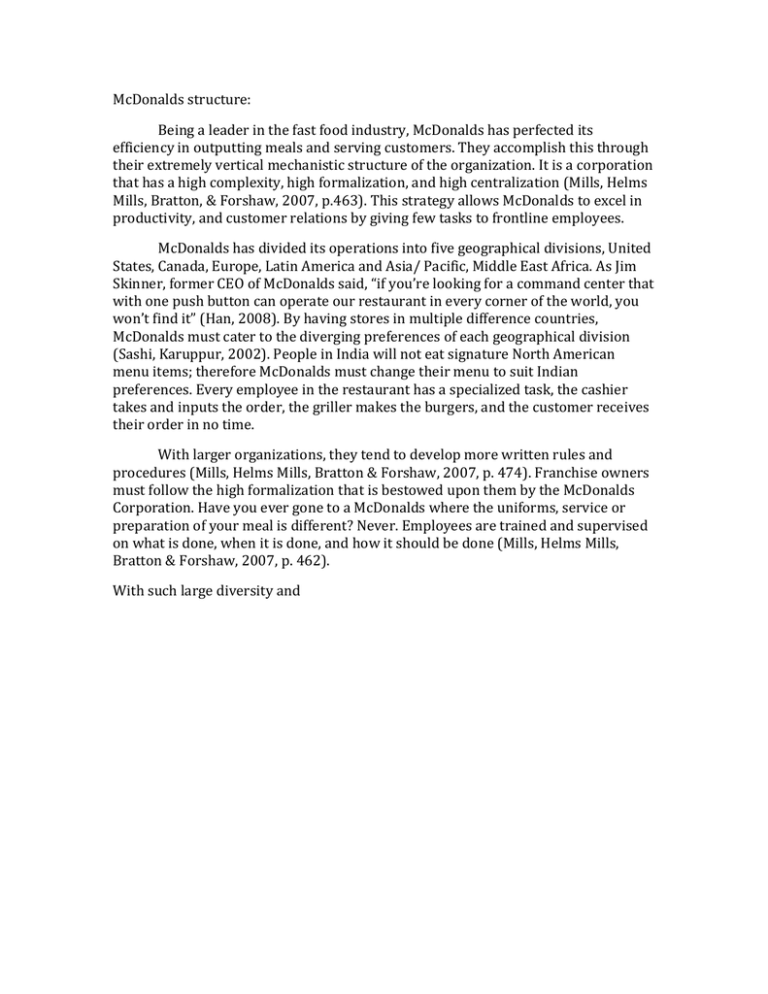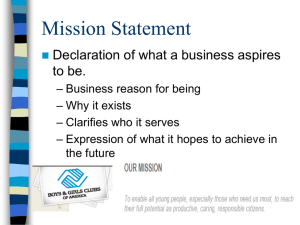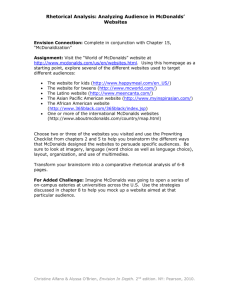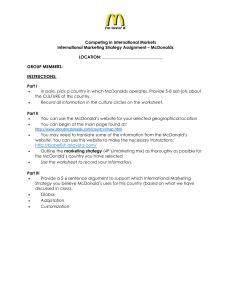McDonalds structure
advertisement

McDonalds structure: Being a leader in the fast food industry, McDonalds has perfected its efficiency in outputting meals and serving customers. They accomplish this through their extremely vertical mechanistic structure of the organization. It is a corporation that has a high complexity, high formalization, and high centralization (Mills, Helms Mills, Bratton, & Forshaw, 2007, p.463). This strategy allows McDonalds to excel in productivity, and customer relations by giving few tasks to frontline employees. McDonalds has divided its operations into five geographical divisions, United States, Canada, Europe, Latin America and Asia/ Pacific, Middle East Africa. As Jim Skinner, former CEO of McDonalds said, “if you’re looking for a command center that with one push button can operate our restaurant in every corner of the world, you won’t find it” (Han, 2008). By having stores in multiple difference countries, McDonalds must cater to the diverging preferences of each geographical division (Sashi, Karuppur, 2002). People in India will not eat signature North American menu items; therefore McDonalds must change their menu to suit Indian preferences. Every employee in the restaurant has a specialized task, the cashier takes and inputs the order, the griller makes the burgers, and the customer receives their order in no time. With larger organizations, they tend to develop more written rules and procedures (Mills, Helms Mills, Bratton & Forshaw, 2007, p. 474). Franchise owners must follow the high formalization that is bestowed upon them by the McDonalds Corporation. Have you ever gone to a McDonalds where the uniforms, service or preparation of your meal is different? Never. Employees are trained and supervised on what is done, when it is done, and how it should be done (Mills, Helms Mills, Bratton & Forshaw, 2007, p. 462). With such large diversity and Introduction: McDonalds is one of the largest, most recognized and respected brands in the world. They operate over 33, 000 restaurants located in 119 countries (Mcdonalds.ca). McDonalds’ combination of power and structure create a unique ‘power structure’ and vastness that has the influence to exert power over their target market and segmentation. References: http://www.mcdonalds.ca/ca/en/contact_us/faq.html Mills, A., Helms Mills, J., Bratton, J., Forshaw, C. (2007). Organizational Behaviour In A Global Context (1st Edition ed.). Toronto: Broadview Press Sashi, C.M., Karuppur D.P., (2002). Franchising in Global Markets: towards a conceptual framework, International Marketing Review, Vol. 19 Iss: 5, pp. 499-524




